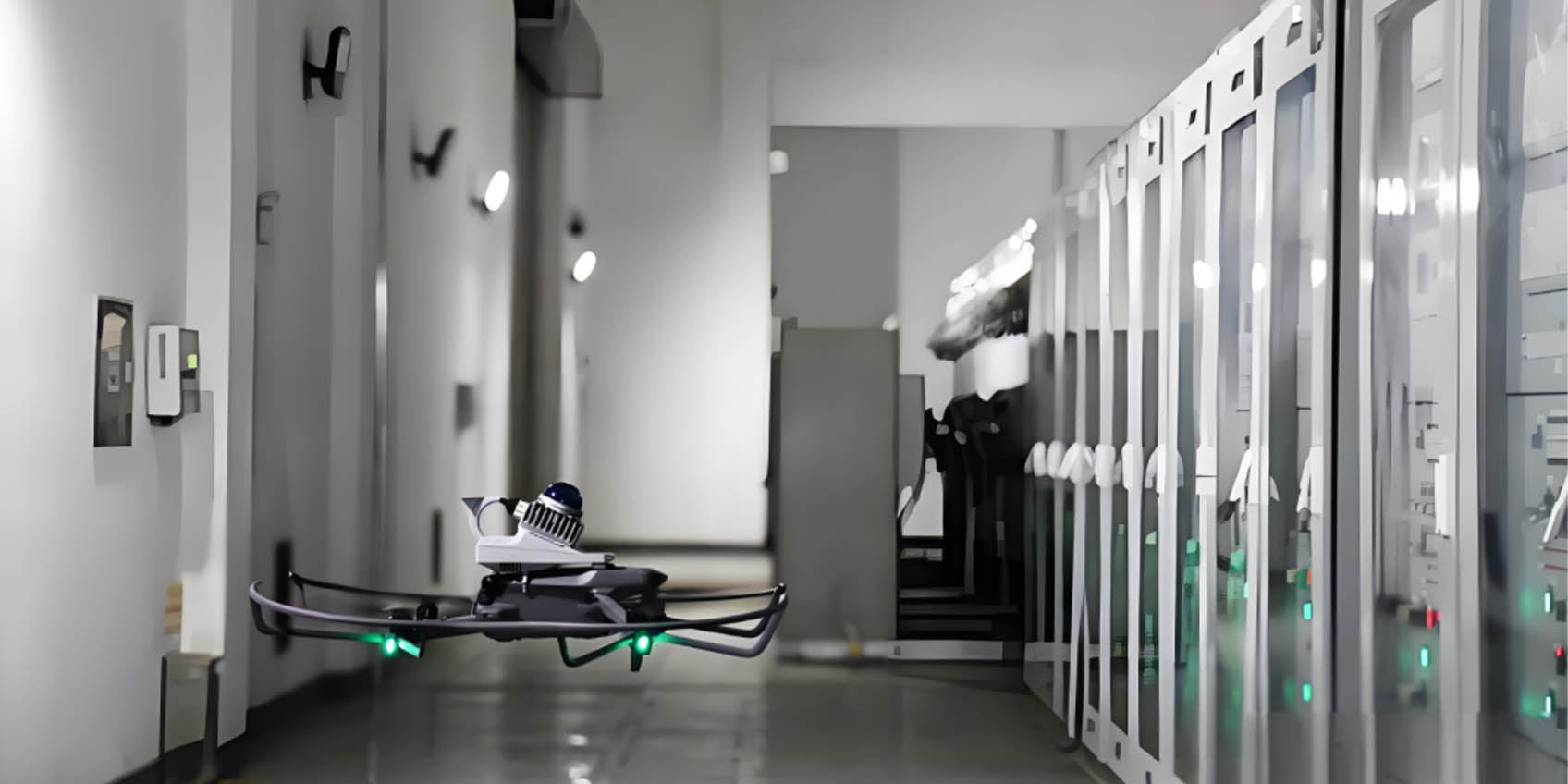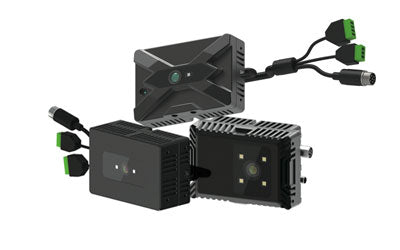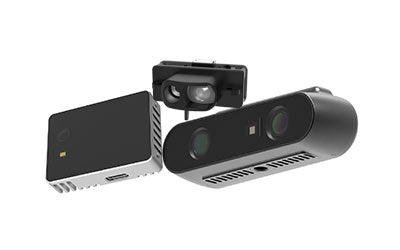Drones with ToF Sensors: A New Era of Precision Navigation

What is the distance sensor for ToF?
A Time-of-Flight (ToF) distance sensor is a device that calculates the distance to an object by measuring the time difference between the emission of a light signal from the sensor and its reflection from the object. These sensors typically emit infrared light or laser beams and determine the distance based on the return time of the signal. ToF sensors offer high-precision distance measurements and are widely used in robotics, drones, autonomous vehicles, and other fields requiring spatial awareness.
As drone technology continues to advance, its applications are no longer limited to vast outdoor spaces. The demand for drones is steadily increasing in complex indoor environments such as industrial warehouses, shopping malls, factories, and hospitals.
However, indoor navigation presents several challenges, including limited space, numerous obstacles, and the lack of GPS signals. To address these challenges, Time-of-Flight (ToF) sensors provide drones with high-precision distance measurement and spatial awareness, becoming a key technology for indoor navigation.
ToF sensors calculate distance by measuring the time difference between the emission and reflection of light pulses from objects, generating real-time depth data. This efficient and accurate method of distance measurement allows indoor drones to achieve autonomous navigation and obstacle avoidance in complex environments, opening up significant possibilities for drone applications.
Working Principle of ToF Sensors in Indoor Navigation
ToF sensors calculate the distance between an object and the sensor by emitting light pulses and measuring the time it takes for the reflected light to return. By continuously measuring depth information at multiple points in space, ToF camera sensors can generate real-time 3D maps or point clouds, helping drones accurately detect obstacles, walls, furniture, or other structures in indoor environments.
In indoor navigation, the depth sensing capability of ToF cameras can be integrated with the drone’s flight control system, providing precise environmental feedback. This enables drones to autonomously fly through narrow passages and complex architectural structures, avoiding obstacles and ensuring safe operation.
Advantages of ToF Sensors for Indoor Drone Navigation
-
Accurate Obstacle Avoidance and Autonomous Navigation Indoor environments feature various obstacles, including walls, furniture, equipment, and people. Traditional navigation systems struggle with such complexities. ToF sensors generate real-time depth information, detecting the shape and position of objects, helping drones automatically plan flight paths to avoid collisions.
Compared to visual sensors and ultrasonic sensors, ToF sensors maintain high-precision measurement even in poor lighting or highly reflective environments, ensuring stable flight in dark or brightly lit indoor conditions.
-
Precise Positioning Without GPS Signals Indoor environments typically lack GPS signals, limiting traditional outdoor navigation methods. ToF sensors do not rely on GPS; instead, they generate 3D maps by measuring the distance between objects and the drone, allowing for autonomous positioning and navigation.
When combined with inertial navigation systems (INS) or visual odometry (VIO), ToF sensors provide more stable and accurate indoor positioning, enabling drones to perform autonomous tasks such as material transport, inventory management, or automated inspection in factories, warehouses, and hospitals.
-
Multisensor Fusion for Intelligent Flight ToF sensors can work independently or be integrated with other sensors, such as cameras, ultrasonic sensors, and LiDAR, forming a multisensor fusion system. This fusion offers more comprehensive environmental data, enhancing navigation accuracy and stability.
For example, in warehouse management, ToF sensors can be paired with RFID readers to precisely locate and track goods. In complex architectural structures, combining ToF cameras with visual sensors allows drones to collect both visual and depth data, enabling more complex path planning and decision-making.
-
Adaptation to Complex Indoor Structures and Dynamic Environments The real-time depth sensing capability of ToF sensors allows them to quickly adapt to complex and dynamic indoor environments. In environments such as shopping malls, warehouses, or industrial production areas, where people and equipment may move frequently, ToF sensors provide dynamic feedback, helping drones adjust their flight routes accordingly.
This flexibility not only improves drone safety but also ensures efficient operation in environments with frequent changes, allowing for successful completion of indoor tasks.
Applications of Drones with ToF Sensors in Indoor Navigation
-
Warehouse and Logistics Management In large warehouses and logistics centers, drones equipped with ToF sensors can quickly navigate between shelves for inventory checks, material transport, and automated sorting. With real-time depth information provided by ToF sensors, drones can avoid obstacles and automatically identify and record the storage location and condition of goods.
-
Factory and Production Line Automation In modern factories, automated inspection, equipment maintenance, and production line monitoring by drones are becoming common. ToF sensors allow drones to autonomously inspect production lines and detect equipment status. Drones can avoid equipment and machinery, ensuring safe flight and enhancing factory automation.
-
Medical and Hospital Management In hospitals, ToF sensors enable drones to perform tasks such as item transport, medication delivery, or ward inspection. For example, ToF sensors help drones autonomously navigate hospital corridors, avoiding people and obstacles while accurately delivering medicines or documents to designated locations.
-
Intelligent Security and Surveillance In smart buildings or security fields, drones equipped with ToF sensors can be used for indoor inspections and security monitoring. Real-time 3D models generated by ToF sensors enable drones to autonomously detect anomalies, such as unauthorized personnel entry or abnormal equipment movement.
-
Assisted Navigation for Home and Mall Robots In home robots or shopping mall service robots, ToF sensors assist these devices in navigating complex environments autonomously. For example, in malls, drones can autonomously guide customers to specific locations or help monitor and maintain the store in real-time.
Future Development of Drones with ToF Sensors for Indoor Navigation
-
Higher Precision 3D Sensing and Artificial Intelligence Integration As ToF sensor technology advances, its distance measurement accuracy and data processing speed will improve. Future drone indoor navigation systems will deeply integrate with artificial intelligence, enhancing drones' environmental understanding and self-learning capabilities.
-
Cooperative Work Between Multiple Drones ToF sensors will support collaborative operations between multiple drones in indoor environments, enabling more complex task distribution and cooperation. Multiple drones can share environmental data, avoiding each other and coordinating flight paths in real time.
-
Miniaturization and Integration of Sensors As ToF sensors become more miniaturized and integrated, future drones will become smaller and lighter, suitable for even narrower indoor spaces.
Conclusion
Drones equipped with ToF sensors offer an efficient, intelligent solution for indoor navigation. By providing real-time depth sensing, precise positioning, and automatic obstacle avoidance, ToF sensors enable drones to autonomously fly through complex indoor environments and complete various tasks. From indoor drones to applications in industrial automation, warehouse management, and security surveillance, ToF sensors play a crucial role in shaping the future of autonomous flight.
Synexens 3D Of RGBD ToF Depth Sensor_CS30
Our professional technical team specializing in 3D camera ranging is ready to assist you at any time. Whether you encounter any issues with your TOF camera after purchase or need clarification on TOF technology, feel free to contact us anytime. We are committed to providing high-quality technical after-sales service and user experience, ensuring your peace of mind in both shopping and using our products
-
Publié dans
CS30






